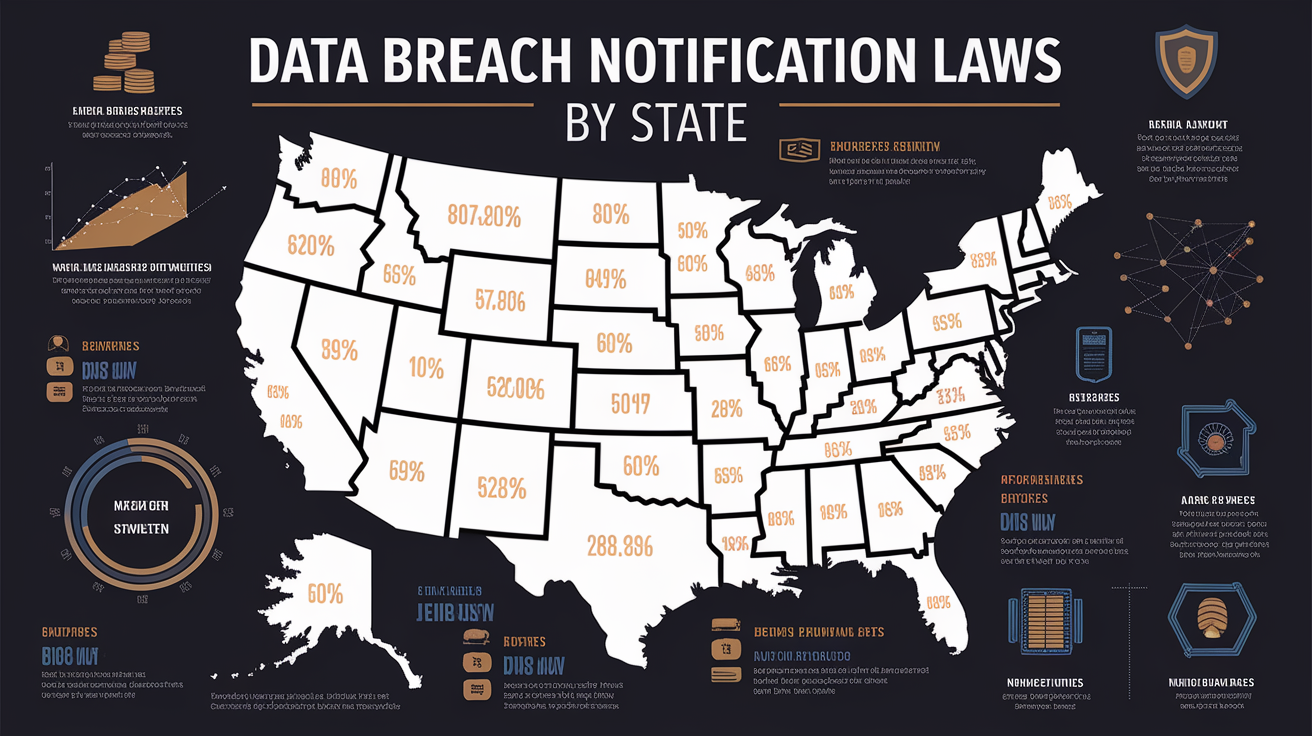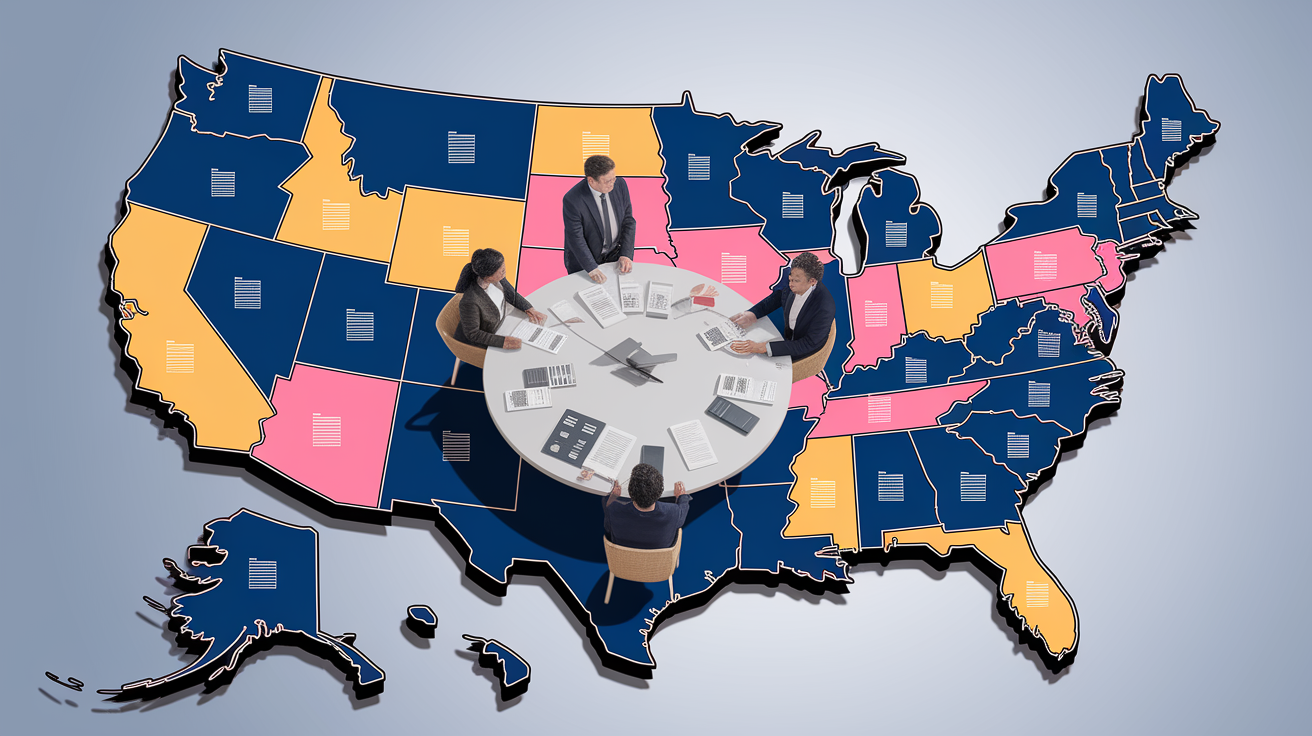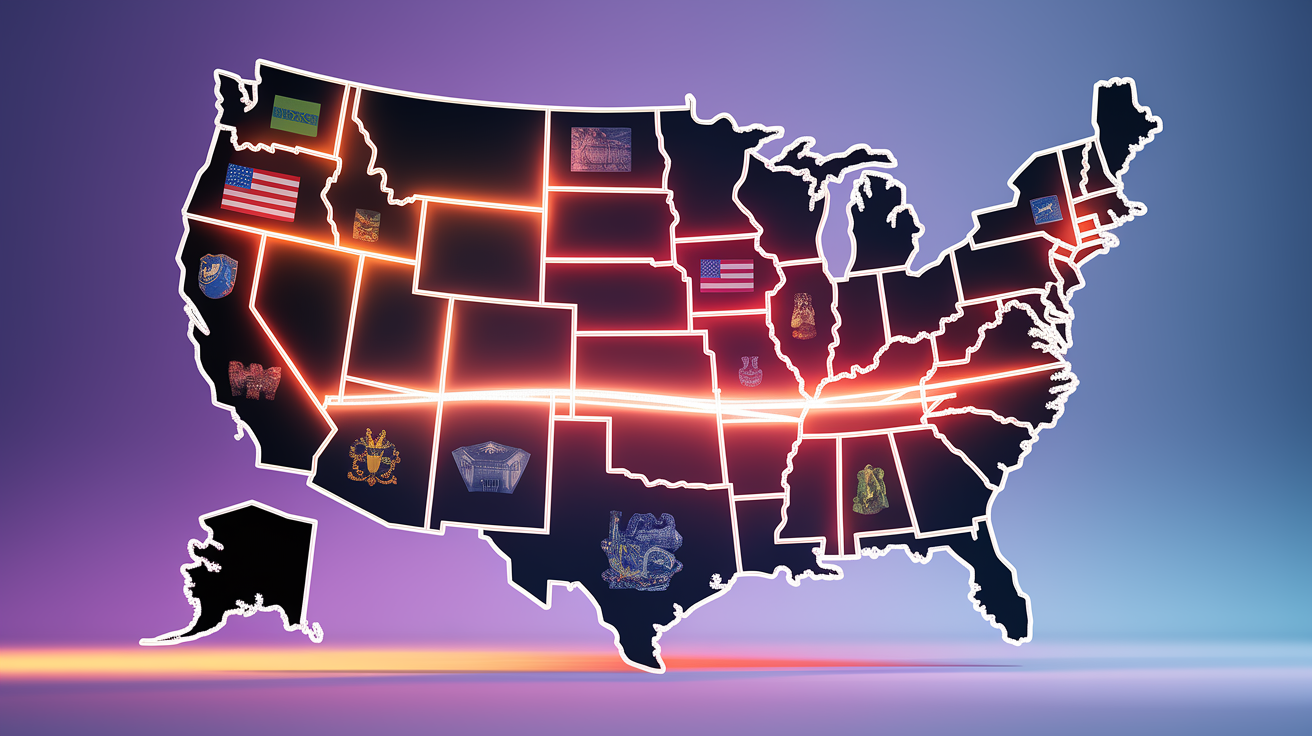Overview of Data Breach Notification Laws by State
It’s no exaggeration to say that understanding data breach notification laws can feel like standing at the bottom of a mountain with no climbing gear. These laws in the United States form a patchwork — each state creating its own rules about what counts as a breach, how quickly you must tell people, and who else needs to hear about it. If you suffer a data security incident, the obligations in California might look completely different from those in Texas, New York, or Florida.

As summarized by IT Governance USA, every state has enacted legislation to protect personal information and ensure transparency whenever a breach occurs. These statutes explain breach disclosure requirements in terms of:
- Definitions of personal information — often referred to as PII (personally identifiable information).
- Notification requirements — timelines and methods for consumer notification, attorney general notification, or notification to other regulators.
- Enforcement and penalties — consequences for failing to comply, which may include civil fines and even the right for affected parties to sue.
Some sectors, such as healthcare, must also follow federal rules like HIPAA. These add extra layers to the compliance stack, along with emerging cybersecurity regulations.
Practical Steps to Ensure State-by-State Compliance
Compliance starts with clarity. Once you know which state laws apply to you, following them becomes an exercise in careful organization.

So, where should you begin? Think of it like assembling an emergency toolkit—without it, you’re left scrambling when a breach occurs. Follow these steps to reduce risk and stay within the lines of the law:
- Identify applicable laws — Analyze where your customers or affected individuals reside. This determines which state statutes matter.
- Classify the compromised data — Determine whether the exposed information meets the state’s definition of “personal information” as explained in Varonis’ state-by-state guide.
- Check timelines — Many states require notification “without undue delay” or within a fixed number of days. Missing the breach notification timeline can result in significant penalties.
- Plan notification recipients — This includes affected individuals, state Attorneys General, or, in some cases, consumer reporting agencies.
- Document every action — Keep a record of all assessments, communications, and notifications issued.
By building this process early, you prepare your organization to respond quickly and effectively to personal data protection obligations.
Tailoring Notification Processes for Individual States
One-size-fits-all won’t cut it here. State privacy laws differ not only in definitions but also in enforcement approaches and acceptable notification methods.

For example, as outlined by Davis Wright Tremaine’s state statute summaries and the Steptoe comparative chart, states may vary in:
- The kinds of data that trigger a breach report — some include medical records or biometric data, while others stick to core identifiers like Social Security numbers.
- Notification methods allowed — written letters, emails, or substitute notices like posting on a website or sending media announcements.
- Thresholds for media notification — typically when a breach affects a large population segment.
- Exemptions — for encrypted data, under specific safe harbor provisions.
If your business operates across multiple states, you should create modular templates — adaptable to specific data protection regulations in each jurisdiction. This helps you comply with personal information breach notification laws without reinventing the wheel every time.
Tracking and Documenting Compliance Efforts
Compliance without documentation is like building a fortress but forgetting to put up the walls. Tracking and record-keeping prove that you’ve met each state’s notification requirements.
Here’s how to embed tracking into your process:
- Create a compliance log — Record the date the breach was discovered, the states involved, and the exact statutes triggered.
- Maintain correspondence archives — Keep copies of letters, emails, and forms submitted to authorities and affected consumers.
- Log internal decision-making — Document assessments about whether a breach triggers notification obligations, especially where exemptions may apply.
- Use compliance software — Many tools can automate deadline alerts, combining state-by-state statutes into one dashboard.
Statistics underscore the importance of these efforts — according to industry analysis, companies that document and track breach responses reduce regulator inquiries by nearly 40% compared to those who don’t.
Benefits of Robust State-by-State Notification Strategies
Strong policies pay off. A clear, adaptable breach response strategy isn’t just about avoiding penalties — it’s about protecting consumer trust and ensuring regulatory compliance.
Applying a robust approach grounded in state-by-state detail can help you:
- Reduce legal exposure — compliance with attorney general notification requirements minimizes risk of lawsuits and fines.
- Boost brand reputation — showing proactive consumer privacy rights protection builds customer confidence.
- Ensure faster recovery — having notification processes ready saves valuable time during a crisis.
- Align with broader frameworks — meeting state laws also supports CCPA, GDPR, and other global data protection regulations.
While the patchwork can be daunting, your ability to navigate it means you’re not just reacting to breaches — you’re guiding your organization safely through a storm, ensuring the people who trust you remain protected.







